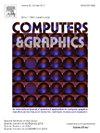Sketch2Data:从手绘信息图表中恢复数据
IF 2.8
4区 计算机科学
Q2 COMPUTER SCIENCE, SOFTWARE ENGINEERING
引用次数: 0
摘要
数据收集和可视化传统上被认为是专家的专属活动。然而,通过绘制简单的几何图形——被称为象形文字——任何人都可以直观地记录自己的数据。然而,由此产生的手绘信息图不能提供对底层数据的直接访问,这阻碍了对字形及其值的数字编辑。我们介绍了一种从基于字形的手绘信息图中恢复数据值的方法。给定位图格式的可视化和用户自定义的符号参数模板,我们利用深度神经网络来检测和定位可视化符号,并估计它们所代表的数据值。我们还提供了一个用户界面,通过神经网络预测的不确定性来审查和纠正这些估计。我们的逆向工程过程有效地将所描述的数据从其可视化表示中分离出来,支持各种可视化创作应用程序,例如可视化新数据值或实验相同数据的替代可视化。本文章由计算机程序翻译,如有差异,请以英文原文为准。

Sketch2Data: Recovering data from hand-drawn infographics
Data collection and visualization have traditionally been seen as activities reserved for experts. However, by drawing simple geometric figures – known as glyphs – anyone can visually record their own data. Still, the resulting hand-drawn infographics do not provide direct access to the underlying data, hindering digital editing of both the glyphs and their values. We introduce a method to recover data values from glyph-based hand-drawn infographics. Given a visualization in a bitmap format and a user-defined parametric template of its glyphs, we leverage deep neural networks to detect and localize the visualization glyphs, and estimate the data values they represent. We also provide a user interface to review and correct these estimates, informed by a measure of uncertainty of the neural network predictions. Our reverse-engineering procedure effectively disentangles the depicted data from its visual representation, enabling various visualization authoring applications, such as visualizing new data values or experimenting with alternative visualizations of the same data.
求助全文
通过发布文献求助,成功后即可免费获取论文全文。
去求助
来源期刊

Computers & Graphics-Uk
工程技术-计算机:软件工程
CiteScore
5.30
自引率
12.00%
发文量
173
审稿时长
38 days
期刊介绍:
Computers & Graphics is dedicated to disseminate information on research and applications of computer graphics (CG) techniques. The journal encourages articles on:
1. Research and applications of interactive computer graphics. We are particularly interested in novel interaction techniques and applications of CG to problem domains.
2. State-of-the-art papers on late-breaking, cutting-edge research on CG.
3. Information on innovative uses of graphics principles and technologies.
4. Tutorial papers on both teaching CG principles and innovative uses of CG in education.
 求助内容:
求助内容: 应助结果提醒方式:
应助结果提醒方式:


